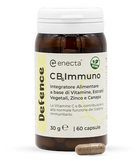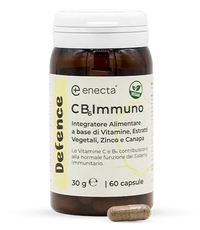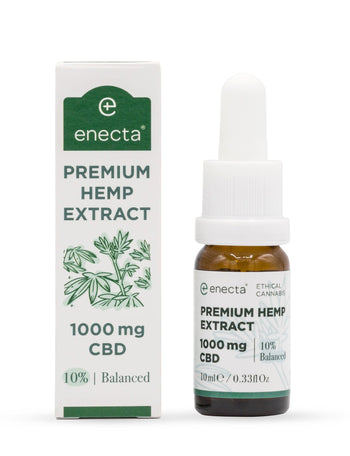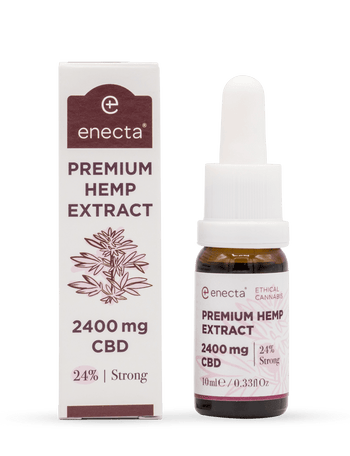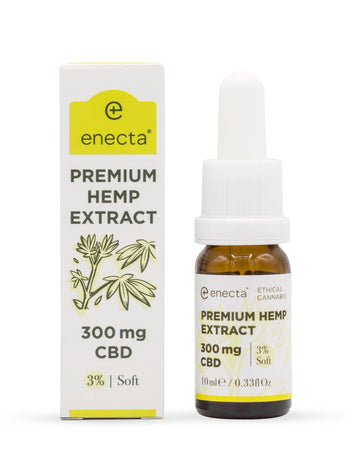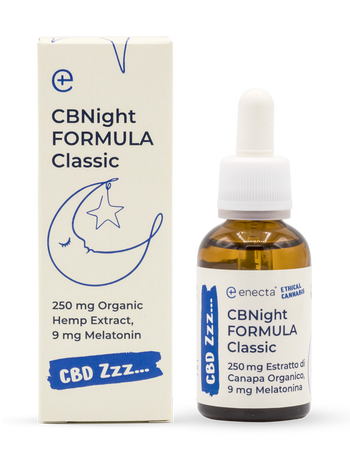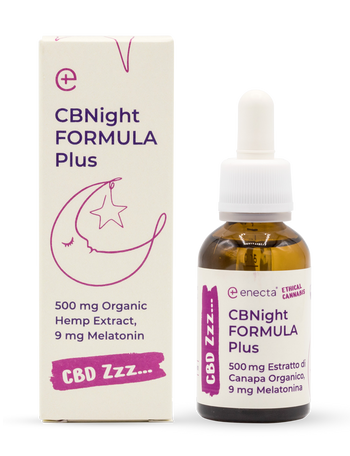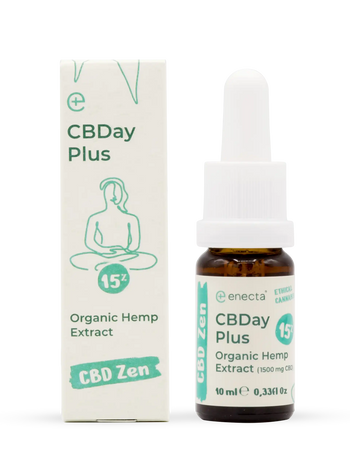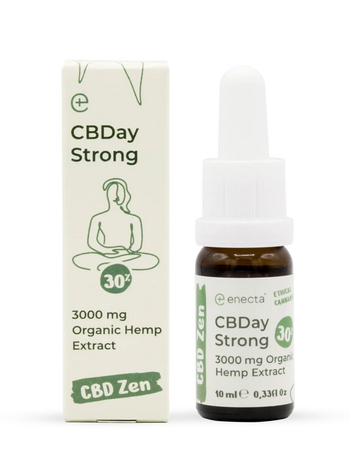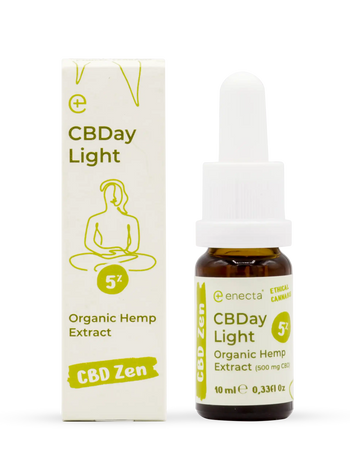What is THC?
If you’ve ever wondered what THC actually is and why it garners so much attention, you’re in the right place. THC, or Tetrahydrocannabinol, is one of the main compounds in cannabis and is responsible for most of its psychoactive effects. But it’s more than just a “high”; it has a fascinating history, complex chemistry, and numerous applications. Let’s dive deeper.
Definition of THC (Tetrahydrocannabinol)
Tetrahydrocannabinol is a chemical compound found in the resin glands of the female cannabis plant. It belongs to a class of compounds known as cannabinoids. These cannabinoids interact with our body’s endocannabinoid system, which plays a significant role in regulating various physiological processes.
Chemical Structure and Properties
The chemical structure of THC is unique and imparts its distinct properties. Here’s a simple overview:
- Chemical formula: C21H30O2
- Molecular mass: 314.47 g/mol
- Appearance: In its pure form, it is a white, crystalline solid.
Main Characteristics of THC:
- Psychoactive Effects: Responsible for the typical "high" associated with cannabis use.
- Lipophilic: It is fat-soluble, meaning it easily dissolves in fats and oils.
History and Origin
Cannabis has a long and fascinating history deeply rooted in human culture. From ancient rituals to modern medicine, its primary active ingredient has had a remarkable journey. The history of cannabis use shows how people have discovered and utilized this plant for various purposes long before understanding its chemical properties.
Origin and Discovery of THC
The discovery dates back to 1964 when Israeli chemist Raphael Mechoulam and his team isolated the compound and elucidated its structure. However, the use of cannabis itself goes back thousands of years. Humans have used the plant for a variety of applications, both for its psychoactive effects and its medicinal and industrial properties.
- Ancient Times: Archaeological findings show that cannabis was used in China as early as 10,000 years ago, primarily for its fibers and seeds.
- Ancient Cultures: In India and the Middle East, cannabis was used for religious rituals and as medicine. It was mentioned in ancient texts like the Atharvaveda.
- 19th Century: Cannabis found its way into Western medicine, where it was prescribed for various ailments.
Historical Use of Cannabis
Cannabis was used in different cultures for various purposes. The plant's versatile uses demonstrate its importance in human history:
- Medical: In traditional Chinese medicine, cannabis was used for pain relief and treating various illnesses. It was also used in India's Ayurvedic medicine as a remedy.
- Ritual and Religion: In India, cannabis is revered as a sacred plant and is part of religious rituals, especially during the Holi festival. It also played a ritualistic role in other cultures, like the Scythians.
- Industry: Hemp fibers were used to make textiles, ropes, and paper. In ancient China, hemp fibers were used to make paper, promoting the spread of knowledge and literature.
Historical Use of Cannabis:
- Time Period | Region | Use
- 10,000 years ago | China | Fibers, Seeds
- Ancient India | India | Medicine, Religion
- Ancient Egypt | Egypt | Medicine
- 19th Century | Europe, USA | Medicine, Industry
How THC Affects the Body
Now that you know what THC is and how it was discovered, let’s dive deeper into the science behind its effects on the body. THC interacts with the human body in a fascinating way, primarily through the endocannabinoid system (ECS). This system plays a crucial role in maintaining homeostasis and regulating various physiological processes.
Endocannabinoid System: Basics
The endocannabinoid system consists of three main components: endocannabinoids, receptors, and enzymes. It is a complex biological system discovered in the early 1990s and has since been extensively researched.
- Endocannabinoids: These are endogenous molecules that function similarly to cannabinoids from the cannabis plant. Two of the best-known endocannabinoids are anandamide and 2-AG.
- Receptors: The two main types of cannabinoid receptors are CB1 and CB2. CB1 receptors are primarily found in the brain and central nervous system, while CB2 receptors are mainly in peripheral organs and the immune system.
- Enzymes: Enzymes like FAAH and MAGL break down endocannabinoids after they have fulfilled their function.
Mechanisms of THC Action
When THC enters the body, it binds to the CB1 receptors in the brain and central nervous system. This binding triggers a series of effects that can influence both perception and behavior.
- Psychoactive Effects: It activates the CB1 receptors in the brain, leading to the typical psychoactive effects. These effects include changes in perception, mood, and cognitive functions.
- Pain Relief: Through this activation in the central nervous system, it can also relieve pain. It is often used to treat chronic pain.
- Appetite Stimulation: Additionally, it affects the hypothalamus region of the brain, leading to an increased release of hunger hormones.
Short-term and Long-term Effects
THC has both short-term and long-term effects on the body. The short-term effects occur immediately or within a few minutes after consuming marijuana and can last for several hours. Long-term effects develop over a longer period of regular use.
Short-term Effects:
- Euphoria or “High”
- Relaxation
- Altered sensory perception
- Increased appetite (known as “munchies”)
- Impairment of short-term memory
Long-term Effects:
- Tolerance: The body gets used to the effect, requiring higher doses to achieve the same effects.
- Potential Psychological Impact: In some individuals, long-term use can contribute to mental health issues like anxiety or depression.
- Dependence: There is a risk of developing psychological dependence, especially with intense and frequent use.
The effects are diverse and depend on various factors, including dosage, method of consumption, and individual sensitivity.
Medical Uses of THC
Cannabis not only has a long history of recreational use but also plays a significant role in the medical world. In recent decades, numerous studies have investigated the potential therapeutic benefits of THC. This research has led to the medical use of cannabis in many parts of the world.
Medical Applications
THC is used in medicine to treat a variety of conditions and diseases. Here are some of the most common applications:
- Pain Relief: It is often used to treat chronic pain, including pain associated with cancer, multiple sclerosis, and nerve damage.
- Appetite Stimulation: It can increase appetite in patients experiencing weight loss or appetite loss, especially cancer patients and those with HIV/AIDS.
- Nausea and Vomiting: It is also used to relieve nausea and vomiting caused by chemotherapy or other medical treatments.
- Muscle Spasticity: THC can reduce muscle spasticity in patients with neurological disorders like multiple sclerosis.
- Glaucoma: It can lower intraocular pressure, helping in the treatment of glaucoma.
Research Findings and Studies
There is a growing body of research supporting the medical benefits of marijuana. Here are some notable findings:
- Pain Management: Studies have shown that THC significantly reduces pain intensity in patients with chronic pain. A meta-analysis of several studies found THC-containing preparations effective in pain management.
- Appetite Stimulation: Research has shown that THC significantly increases appetite in cancer patients and patients with HIV/AIDS, improving their quality of life.
- Neurological Disorders: Clinical studies have shown that THC reduces muscle spasticity in patients with multiple sclerosis and improves mobility.
Benefits and Risks
The medical use of marijuana offers many benefits but also comes with some risks. It is essential to consider both sides to make an informed decision about using THC as medicine.
Benefits:
- Effective Pain Relief
- Improved Appetite and Weight Management
- Relief from Nausea and Vomiting
- Reduction in Muscle Spasticity and Improved Quality of Life
Risks:
- Psychological Side Effects like Anxiety and Paranoia
- Potential for Dependence
- Impairment of Cognitive Functions with Long-term Use
- Interactions with Other Medications
Recreational Use of THC
In addition to medical applications, THC is widely used recreationally. Many people consume cannabis to relax, expand their consciousness, or simply have fun. This chapter explores the various forms of recreational use, its popularity, and trends.
Forms of Consumption
There are many different ways to consume cannabis. Each method has its advantages and disadvantages, and the choice of consumption method can affect the intensity and duration of the effects.
Smoking: This is the most traditional and widespread method of consuming cannabis. The dried flowers are smoked in a joint, pipe, or bong.
- Advantages: Quick onset of effects, easy to dose
- Disadvantages: Health risks from inhaling smoke
Vaporizing (Vaping): Vaporizing heats cannabis without burning it, reducing the release of harmful byproducts.
- Advantages: Less harmful than smoking, quick onset of effects
- Disadvantages: Cost of vaporizer, possible uncertainty about ingredients in purchased products
Edibles: THC can be processed into foods like brownies, gummies, or drinks.
- Advantages: Discreet, no health risks from inhalation
- Disadvantages: Delayed onset of effects, difficult to dose, risk of overdose
Tinctures and Oils: These liquid extracts can be dropped under the tongue or mixed into food and drinks.
- Advantages: Precise dosing, versatile applications
- Disadvantages: Delayed onset of effects, potentially unpleasant taste
Popularity and Trends
The popularity of cannabis has increased in recent years, partly due to increasing legalization and changing public perception. Here are some current trends in recreational use of THC:
- Legalization and Social Acceptance: In many countries and US states, cannabis has been legalized or decriminalized, leading to higher acceptance and use.
- Diversity of Products: The cannabis industry has developed a variety of new products, from gourmet edibles to high-tech vaporizers, catering to different consumer needs.
- Microdosing: A growing trend is microdosing, where very small amounts of THC are consumed to achieve subtle effects without a strong high.
Side Effects and Risks
While THC has many positive effects and medical applications, it is also important to understand the potential side effects and risks. Marijuana use can have both short-term and long-term negative health impacts. This chapter examines these aspects in detail to provide a comprehensive picture.
Short-term Side Effects
The short-term side effects of THC usually occur immediately after consumption and can last for several hours. They vary depending on the amount consumed, method, and individual sensitivity.
Common short-term side effects:
- Dry Mouth: A common phenomenon, often referred to as "cottonmouth."
- Red Eyes: Due to dilated blood vessels in the eyes.
- Increased Heart Rate: THC can increase heart rate, which can be uncomfortable, especially for people with heart problems.
- Impairment of Short-term Memory: Difficulty remembering recent events.
- Coordination Problems: Reduced motor skills, which can be particularly dangerous when driving.
- Anxiety and Paranoia: Some people may develop anxiety or paranoid thoughts after consuming THC.
Long-term Health Risks
Long-term and intense cannabis use can lead to several health problems. These risks are often the result of regular use over months or years.
Potential long-term health risks:
- Mental Health: There is evidence that long-term THC use can increase the risk of mental disorders such as anxiety, depression, and schizophrenia, especially in people predisposed to them.
- Dependence: Long-term use can lead to psychological dependence. Although physical dependence is less pronounced than with other drugs, psychological dependence can be strong.
- Cognitive Impairment: Chronic use can lead to persistent problems with memory, attention, and learning ability.
- Lung Problems: Smoking cannabis can impair lung function and cause respiratory problems, similar to smoking tobacco.
- Impaired Social Functions: Persistent use can impair social and occupational functions, leading to problems in daily life.
Psychological and Physical Dependence
THC can cause both psychological and physical dependence, with psychological dependence being much more common. The symptoms of dependence can begin subtly and gradually intensify.
Signs of Dependence:
- Symptom | Description
- Tolerance | Need for higher doses
- Withdrawal Symptoms | Irritability, insomnia, loss of appetite
- Loss of Control | Difficulty reducing consumption
- Neglect | Neglect of important activities
THC vs. CBD
When it comes to cannabinoids, THC and CBD (Cannabidiol) are the two most well-known and studied compounds. Although they both come from the cannabis plant, they have different properties and effects. This chapter compares THC and CBD to understand their similarities and differences as well as their respective applications.
Differences and Similarities
Similarities:
- Source: Both come from the cannabis plant.
- Structure: THC and CBD have a similar chemical structure but differ in the arrangement of their atoms.
- Interaction with ECS: Both act on the endocannabinoid system, albeit in different ways.
Differences:
- Psychoactive Effect: THC is psychoactive and causes the typical "high," while CBD has no psychoactive effects.
- Receptor Binding: THC binds directly to CB1 receptors in the brain, while CBD modulates the effect of endocannabinoids and interacts indirectly with CB1 and CB2 receptors.
- Legal Status: In many countries, THC is strictly regulated or illegal, while CBD is generally more legal and can be sold in various products.
Effects and Applications of CBD Compared to THC
THC:
- Effects: Psychoactive effects, relaxation, euphoria, pain relief, increased appetite
- Medical Applications: Pain relief, appetite stimulation, nausea and vomiting (especially in chemotherapy), muscle spasticity (in multiple sclerosis), sleep disorders
CBD:
- Effects: Non-psychoactive, anxiolytic, anti-inflammatory, pain-relieving, anticonvulsant
- Medical Applications: Epilepsy (especially in children), anxiety disorders, inflammation, chronic pain, sleep disorders, skin conditions (such as acne)
The choice between THC and CBD depends on individual needs and desired effects. For those seeking relief without psychoactive effects, CBD is often the better choice. THC, on the other hand, is preferred when strong psychoactive effects and specific medical applications are desired.
Combination of THC and CBD
In many cases, THC and CBD are used together to achieve synergistic effects. This is known as the "entourage effect," where the two compounds work together to maximize therapeutic benefits and minimize side effects.
Benefits of Combination:
- Reduced Side Effects: CBD can mitigate some of the negative side effects of THC, such as anxiety and paranoia.
- Enhanced Efficacy: The combination can improve efficacy in treating pain, inflammation, and other conditions.
Examples of Combinations:
- Sativex: An oral spray containing both THC and CBD is used to treat spasticity in multiple sclerosis.
- Various Oils and Tinctures: Many commercial products contain balanced ratios of THC and CBD to provide a broad spectrum of therapeutic effects.
The combination of the two active ingredients can be an effective treatment option for various medical conditions and offers tailored therapy that meets individual needs.
References:
- Mechoulam, R., Shvo, Y. (1963). Hashish—I. The structure of cannabidiol. Tetrahedron, 19(12), 2073-2078. Link to study
- Pacher, P., Bátkai, S., & Kunos, G. (2006). The Endocannabinoid System as an Emerging Target of Pharmacotherapy. Pharmacological Reviews, 58(3), 389-462. DOI: 10.1124/pr.58.3.2. PMCID: PMC2241751. NIHMSID: NIHMS38123. PMID: 16968947. Link to study
- Abuhasira, R., Shbiro, L., & Landschaft, Y. (2018). Medical use of cannabis and cannabinoids containing products - Regulations in Europe and North America. European Journal of Internal Medicine, 49, 2-6. DOI: 10.1016/j.ejim.2018.01.001. Link to study
- Sideli, L., Quigley, H., La Cascia, C., & Murray, R. M. (2019). Cannabis Use and the Risk of Psychosis and Affective Disorders. Journal of Dual Diagnosis. DOI: 10.1080/15504263.2019.1674991. Link to study
- Iffland, K., & Grotenhermen, F. (2017). An Update on Safety and Side Effects of Cannabidiol: A Review of Clinical Data and Relevant Animal Studies. Cannabis and Cannabinoid Research, 2(1), 139-154. DOI: 10.1089/can.2016.0034. PMCID: PMC5569602. PMID: 28861514. Link to study
- Huestis, M. A. (2007). Human Cannabinoid Pharmacokinetics. Chemistry & Biodiversity, 4(8), 1770-1804. Link to study
- Zuardi, A. W. (2008). Cannabidiol: from an inactive cannabinoid to a drug with wide spectrum of action. Revista Brasileira de Psiquiatria, 30(3), 271-280. DOI: 10.1590/s1516-44462008000300015. PMID: 18833429. Link to study
- Grotenhermen, F. (2003). Pharmacokinetics and pharmacodynamics of cannabinoids. Clinical Pharmacokinetics, 42(4), 327-360. DOI: 10.2165/00003088-200342040-00003. PMID: 12648025. Link to study
- Huestis, M. A., & Cone, E. J. (2004). Relationship of Delta 9-tetrahydrocannabinol concentrations in oral fluid and plasma after controlled administration of smoked cannabis. Journal of Analytical Toxicology, 28(6), 394-399. DOI: 10.1093/jat/28.6.394. PMID: 15516285. Link to study





